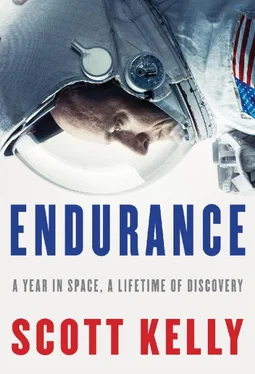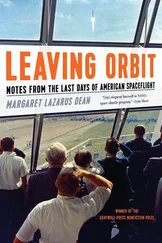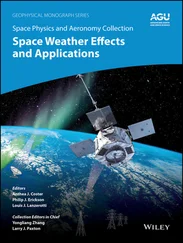We started seeing each other that fall, and things between us had become serious by the time I went to space in October 2010. This was my first long-duration mission to the International Space Station and her first mission as the partner left behind. It was an unusual challenge for a new relationship. We were both surprised to find that the separation only brought us closer. I could depend on her as my partner on the ground, and we enjoyed being able to give each other our undivided attention for the hour or so a day we could talk on the phone. I came back more confident than ever that we belonged together. I know some of our friends wonder why we haven’t gotten married—we’ve been together now for five and a half years and have lived together for much of that time. I’ve been there for her sons when necessary, and she is always there for my daughters. We are as committed as any married couple, but because both of us have been married before, and neither of us is especially traditional, we don’t seem to see the point in it. The media sometimes refer to Amiko as my “longtime partner,” and that seems right to both of us.
Sitting next to Amiko is Samantha. I’d been surprised to see her new look when she showed up in Baikonur, her long curls dyed black, thick black eyeliner, dark red lipstick, and nothing but black clothes. Since her mother and I divorced, my relationship with Samantha has been rocky, and in many ways it’s still recovering from the fallout. She was fifteen when Leslie moved the girls against my wishes from Houston to Virginia Beach, an especially tough age to deal with that kind of upheaval. Samantha blames me for the divorce and for many of the problems that have come since. When I look at her today through the glass, her blue eyes sparkling under the heavy eyeliner, I still see her the way she looked the first time I saw her, in 1994, in the maternity ward of the Patuxent River naval air station, where I was a test pilot. Leslie went through a long, difficult labor, and when Samantha was finally delivered it was by emergency cesarean section. When I first saw her tiny pink face with one eye shut and the other eye open, I felt an unbelievable urge to protect her. Though she’s an adult now, I still feel the same way.
Charlotte was born when Samantha was almost nine, an age gap that has made it easy for them to get along. Samantha seems to enjoy having an adoring sidekick, and Charlotte has had the freedom to go anywhere her older sister is willing to take her—including to Baikonur. Charlotte’s birth was even more difficult than Samantha’s; I remember standing in the operating room and hearing the doctor calling an emergency code. When they finally got Charlotte out, she was limp and unresponsive. I still remember the sight of her tiny, blue, lifeless arm hanging out of the incision. The doctors warned us she might have cerebral palsy, but she has grown up to be healthy, bright, strong, and a generous-spirited person. I know she must be experiencing extremes of emotion today, but she seems happy and calm, sitting next to her sister and brushing her light brown bangs out of her eyes to smile at me. I feel grateful that my daughters are able to lean on Amiko for reassurance and to follow her lead in how to deal with the stresses of this week.
I also spot Spanky—Mike Fincke, a friend and colleague from my astronaut class—who has been in charge of helping out my family while I’ve been in quarantine. Between missions, astronauts can be assigned to take on all kinds of earthbound responsibilities, and Spanky, who has been to ISS himself and will probably go back, has been fantastic with my family—answering questions, fulfilling special requests, communicating their preferences to NASA whenever possible. This is the second time Spanky has done this job for me.
On our side of the glass is a mock-up of the Soyuz seat, and one by one, Gennady, Misha, and I get into it, lying on our backs. Technicians check our suits for leaks. I lie there for fifteen minutes with my helmet closed and my knees pressed up to my chest while a large room full of people, some of whom I don’t know, watch politely. Why we need to do this for an audience I’ve never been sure—another ritual. Afterward we sit in a row of chairs before the glass to have a last talk, through microphones, with our families.
The things we want to say to our loved ones before we might be about to die in a fireball above Kazakhstan are not the things we would want to say while the assembled press from a number of countries listen from rows of chairs and write down our every word. Adding to the awkwardness, we are all sharing one audio system, so each family has to wait their turn to avoid talking over one another. Still, I wouldn’t want my daughters’ last image to be of me speaking a few terse words into a microphone, so I try to split the difference by saying little but trying to communicate much in other ways, figuring that simple gestures can say a lot. I give Amiko and the girls the “I’ve got my eyes on you” gesture, pointing back and forth from my eyes to their eyes. It makes them smile.
When we finish this ritual and go outside, it’s dark and freezing cold. Floodlights blind us as we walk into the parking lot, flanked by rows of media and spectators we can barely make out. The Sokol suits are designed for sitting in the fetal position while launching in the Soyuz, not for walking, so the three of us waddle along like hunched penguins with as much dignity as we can. We are carrying cooling fans that blow air into our pressure suits, like the Apollo astronauts in the old NASA footage. We are all wearing two pairs of thin white gloves that are meant to keep us from bringing germs to space (at least, that’s the idea). We will remove the top layer right before we get into the Soyuz.
The bus taking us to the launchpad is idling nearby, its billowing exhaust silhouetted by the floodlights. The three of us walk up to three small white squares that have been painted on the asphalt, labeled with our positions on the Soyuz: commander for Gennady, flight engineer for Misha, flight engineer 2 for me. We step into our little boxes and wait for the head of the Russian space agency to ask us each in turn, again, if we are ready for our flight. It’s sort of like getting married, except whenever you’re asked a question you say, “We are ready for the flight” instead of “I do.” I’m sure the American rituals would seem just as alien to the Russians: before flying on the space shuttle, we would get suited up in our orange launch-and-entry suits, stand around a table in the Operations and Checkout Building, and then play a very specific version of lowball poker. We couldn’t go out to the launchpad until the commander had lost a round (by getting the highest hand), using up his or her bad luck for the day. No one remembers exactly how this tradition got started. Probably some crew did it first and came back alive, so everyone else had to do it too.
We board the bus—the prime crew, our flight surgeons, the Gagarin Cosmonaut Training Center managers, and a few suit technicians. We sit on the side facing all the lights and clamoring people. I catch sight of my family one last time and give them a wave. The bus slowly pulls away, and they are gone.
Soon, we are moving, the motion lulling us into a contemplative trance. After a while, the bus slows, then comes to a stop well before the launchpad. We nod at one another, step off, and take up our positions. We’ve all undone the rubber-band seals that had been so carefully and publicly leak-checked just an hour before. I center myself in front of the right rear tire and reach into my Sokol suit. I don’t really have to pee, but it’s a tradition: When Yuri Gagarin was on his way to the launchpad for his historic first spaceflight, he asked to pull over—right about here—and peed on the right rear tire of the bus. Then he went to space and came back alive. So now we all must do the same. The tradition is so well respected that women space travelers bring a bottle of urine or water to splash on the tire rather than getting entirely out of their suits.
Читать дальше












